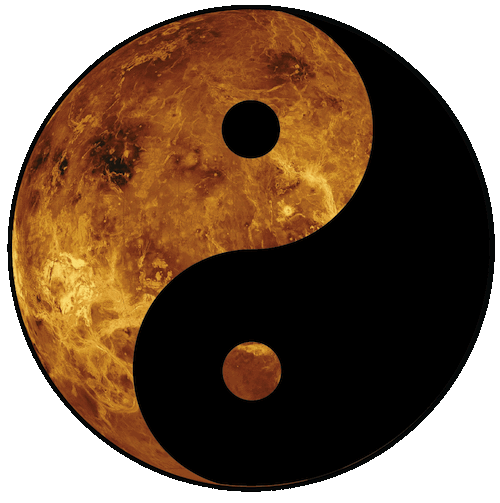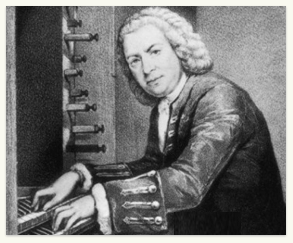~ Amer Afro Euro Latin Musics ~ ~ worldwide music history 101 ~
.
|
"Art is visual history." |
wiki ~ Agnes Hsu-Tang |
A nutshell. Americana music history is as fascinating as its musics. Our discussions here try to bring together how the 12 pitches we own today, not only go all the way back in our academic historical records, but we can use history's timeline to watch their evolutions, as the same pitches weave into the new musics of succeeding generations and songtellers of a historical era. The history of how accurately we've tuned the same pitches from the beginning helps ceneter the history studies and timeline here. For refinement in tuning over the centuries, of the original 12 pitches, encouraged new ways of composing music, and musical art evolved. Rhythm nutshell. And since all Americana cultures of today share many if not all of these same 12 pitches, it's oftentimes in a song's rhythms, where its ethnic origins shine so as to be be easily traced to its culture. This works both ways of course; cliche ethnic rhythms instantly bring their classic roux of flavor (rhythm), and without a roux ... we might just not get the gumbo (song) we love. Bon appetit! |
And as theorists ... sometimes we just have to believe that the solution of an inquiry can be something quite simple, even obvious. And with history, the further back and some things are a real challenge to 'prove.' Faith. Yet the three main elements of our now set in stone composer's aural palette; the 'scales ~ arpeggios ~ chords' Their evolutions in tuning have become markers of changes in the history of music many many times over the thousands of years of our music history. While each will have its theory, each also has its own histories found in art, they each alone have created epic events in musical art, ones that defines a generation and whose ripplings and reverberations are absorbed by generations there ever after, at least for those that are curious to know :) That's us. Years in numbers. At these combined theory - history mileposts there's a number too yes ? That these markers designate an era by a number, for example 1887. Which in itself is the marker of a new pathway to new art. As theorists examining the music of 1887 Americana, we might see how V7 directed the traffic in the chord progressions of popular songs, maybe even catch a hint of a double 'Two / Five' arpeggios and bass lines, surely a composing / chord progression mainstay in the musics of this era. And surely find blue note shadings all within scales, arpeggios, chords and single note melody lines, both written and improvised, at any point along the way. Combined, these ideas spark creative and we grow our art. Most artists find their niche and stick to it, comfortable as they are experts in what they do and consistently produce wonderful art experiences. And some artists keep to the search; ever creating greater challenges to their ability to 'think' and move musically through time, all while making memorable new musics. |
'into the wayback for the ancient pitches ...' |
With drums the now ancient pitches. A recent archeological discovery, made in 1995 in Slovenia, central Europe, unearthed what is known today as the Neanderthal flute. Here's a pic, screenshot borrowed and thanks in advance to wiki. Give it a click, the music is played by Ljuben Dimkaroski. Looks like a part of a flute right? If I can get you to believe that this 'fragment' is indeed a flute, our story here of music theory now comes to life through the same pitches and through a 1000 plus generations of our ancestors. This fragment is part of a flute made by cave cat dwellers a long time ago, and we musicians of today just got to love that our memory melodies can reach that far back, as we have the same pitches today. And if our memory serves us well we might rediscover today in our own songs, age spanning ancient melodies that we all will understand, and bring us all together with music :) |
|
Slovenia ! Deep in the heart of early Europe where lots of coolness began.
( this screenshot from google, thanks in advance ) |
With our modern scientific computer modeling and 3d printing capabilities, archeologists recreated a complete version of this early flute fragment, revealing that the fingering holes on this flute are spaced to create the pitches of our own diatonic scale. Today and historically speaking, these pitches could easily and quite clearly translate to the white keys on a piano, as from say 'A up to A.' Example 1. Thus the beginning of our pitches, now each letter named to further identify their uniqueness within the group of seven, which then become the modes, which when perfect tuned got stack into chords. And voila, millennia later, today's modern pitches. Got these pitches under your fingers yet ? Find a keyboard and sound them on out, sing along as you go, make up your own modern melodies with ancient pitches :) Controversial archaeological rumination and jealousy, plus modern computer wizardry, all add up to enough drama to write a three act opera with overture :) Yet, consider that the pitches with us today have created melodies for perhaps as many as 2000 generations of our ancestors. That is a lot of melody lines. And if the pitches have been there for that long, then our memories of them are somewhere there also. Thus one tasking of today's artist, to find these ancient melodies and bring them forth into the new light of today, reminding us all of the common ancient heritage we share together through these pitches and our musics. Cross my heart, true story. Recently I gave a pre-concert talk for a jazz group from NYC, that was performing here in Anchorage. Low and behold, when I mentioned this ancient source of our pitches of today, one cat chimed in that he and his family have visited this cave, within this mountain, in modern day Slovenia. A noted musician and educator himself throughout Alaska, Justin's hair like stood straight up and he had tears in his eyes, while he told us all the story of standing in this cave with his family and digging its vibe, believe U me we all got some goose bumps too :) I believe ! |
|
'how it all started and up to today ...' |
Start with one melody. Like the singing of a song by a bird? Or the tones of a wind chimes conjured to life a breeze? That proverbial tune we carry in a bucket? Just whistling up a ditty? That new hook that comes to us from where ? Oh, there? And just' where is there ?' All of these melody creators can be sounded as one melody line, a succession of musical tones moving through time that catches our ear. All monophonic? Yes. 'mono = one phonic = voice' And in our music history timeline, go all the way back as far as the wayback machine can take us, music comes into being with a single melody line of single pitches knitted together. From the dawn of time to say 1200 AD one melody defined the musics. Click the golden balance and hear a line from these 1200 AD monophonic times. |
|
Two or more melodies sounding together. Two birds talking back and forth figuring something out? Mama and child singing a song of love? Duets of romance ? When we're all liberally singing "Happy Birthday" for the birthday celebrant? Two melodies from two flutes, fiddles or kazoos jamming up a story? Weaving two unique melodies together. From one melody line to two, sounded together moving through time. For now we as theorists can examine this music and compare one pitch to another, as they move together through time. So, a 'point (pitch) versus point' study, as in the very formal academic and exacting study of counterpoint ? And in theory, we can look to the 'distance / interval' between two pitches, and muse about their relative consonance or dissonance or tonal gravity to one another ? Precisely. Label, measure, match, mix them up and re-label, re-measure and vary to our hearts content. |
|
'Polyphonic' is our theory term; 'many - voices.' Like traditional Americana dixieland of the 1900's ? |
|
One melody line supported by chords. We probably know this mix the best for it covers most if not all of our Americana musics through the last few centuries. Were there kalimba and xylophone players with the early Afro Americans peoples coming up through the Caribbean to America ? Was there some sort of piano / keyboard instrument on the Mayflower and later rigs coming from Europe around the same time ? Interesting questions to search. Once these two unique peoples combined their musics, Afro and Euro, they also supported their melodies with chords. And gradually over the decades has become the music we know today. A melody line with chords = is the homophonic style And from this point in our collective history as we often say, 'the rest is history :) So around 1800 and forward? Yes, by the early 1800's all the elements are in place. And our written record tells us of the predominance of the homophonic compositional style both here in the Americas and throughout Europe as well. |
|













